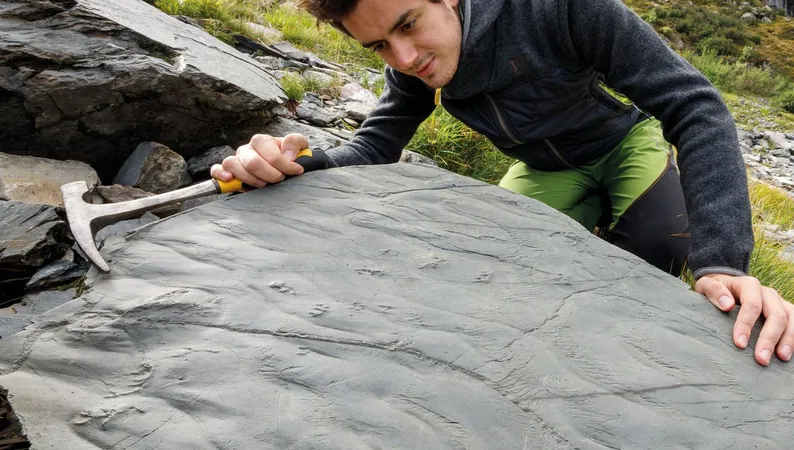
Amazing Discovery in the Alps: 280-Million-Year-Old Ecosystem Uncovered – Pre-Dinosaur Footprints Found!
2024-11-15
Author: Ming
Amazing Discovery in the Alps: 280-Million-Year-Old Ecosystem Uncovered – Pre-Dinosaur Footprints Found!
In a remarkable twist of fate, fossilized remains of an entire prehistoric ecosystem, dating back 280 million years, have been discovered in the stunning Italian Alps. This astonishing find includes footprints of various extinct animals and serves as a window into an era long before the dinosaurs roamed the Earth.
The extraordinary discovery was made by Claudia Steffensen while hiking in Val d’Ambria within the municipality of Piateda, high up at an altitude of 1,700 meters (5,577 feet). Claudia shared her findings with her friend Elio Della Ferrera, a nature photographer. He promptly sent photographs to scientists at the Natural History Museum of Milan, leading to further analysis by experts at the University of Pavia and the Leibniz Institute for Research on Evolution and Biodiversity in Berlin. Their studies confirmed that the discoveries were indeed significant and unprecedented.
The fossilized slates of sandstone revealed the footprints of at least five different species, capturing the essence of life during the Permian period. Notable among these were the footprints of tetrapods (reptiles and amphibians) and various invertebrates like insects and arthropods. Palaeontologist Cristiano Dal Sasso from the Natural History Museum highlighted that while dinosaurs were not present during this time, the largest discovered footprints measured an impressive 2-3 meters in length.
Moreover, the fine sediment composition of the area has remarkably preserved intricate details, including fingerprints, belly skin impressions, and even plant fossils, which showcase leaves, stem fragments, and seeds. The rocks also bear testimony to the ancient environment, showcasing ripples from waves of long-gone lakes and rain droplet imprints that once fell on the moist mud.
According to Ausonio Ronchi from the University of Pavia, the footprints were created when the sands and clays were still wet along the banks of rivers and lakes. The dry summer sun hardened these surfaces, allowing the prints to survive through subsequent layers of clay that formed protective coatings.
The astonishing well-preserved ecosystem found at such heights is a testament to the monumental geological processes that shaped our planet. The Alps, as we know them today, were formed millions of years ago when the African and Eurasian tectonic plates collided, crumpling the sediments of the ancient Tethys Sea into the lofty mountain range we admire now.
This discovery was made possible by the adverse effects of climate change, as warming temperatures have led to the retreat of glaciers and snowcaps in the region, exposing these ancient relics of the Earth’s history. The current global warming trend bears a striking resemblance to past geological events, which were driven by vast volcanic eruptions leading to greenhouse gas increases, polar ice melts, and changes in climate patterns that favored reptilian life over amphibians, resulting in the extinction of numerous other species.
Stefano Rossi, representing the Superintendency of Archaeology, emphasized the importance of these fossils as lessons from the Earth’s past, reflecting how environmental changes can have drastic effects on living ecosystems. The past, it seems, has much to teach us about our present and future in light of ongoing climate issues.
This astonishing discovery is not only breaking scientific ground but also serves as a crucial reminder of our planet's complex history and the impacts of climate change — a narrative that continues to unfold.

 Brasil (PT)
Brasil (PT)
 Canada (EN)
Canada (EN)
 Chile (ES)
Chile (ES)
 España (ES)
España (ES)
 France (FR)
France (FR)
 Hong Kong (EN)
Hong Kong (EN)
 Italia (IT)
Italia (IT)
 日本 (JA)
日本 (JA)
 Magyarország (HU)
Magyarország (HU)
 Norge (NO)
Norge (NO)
 Polska (PL)
Polska (PL)
 Schweiz (DE)
Schweiz (DE)
 Singapore (EN)
Singapore (EN)
 Sverige (SV)
Sverige (SV)
 Suomi (FI)
Suomi (FI)
 Türkiye (TR)
Türkiye (TR)